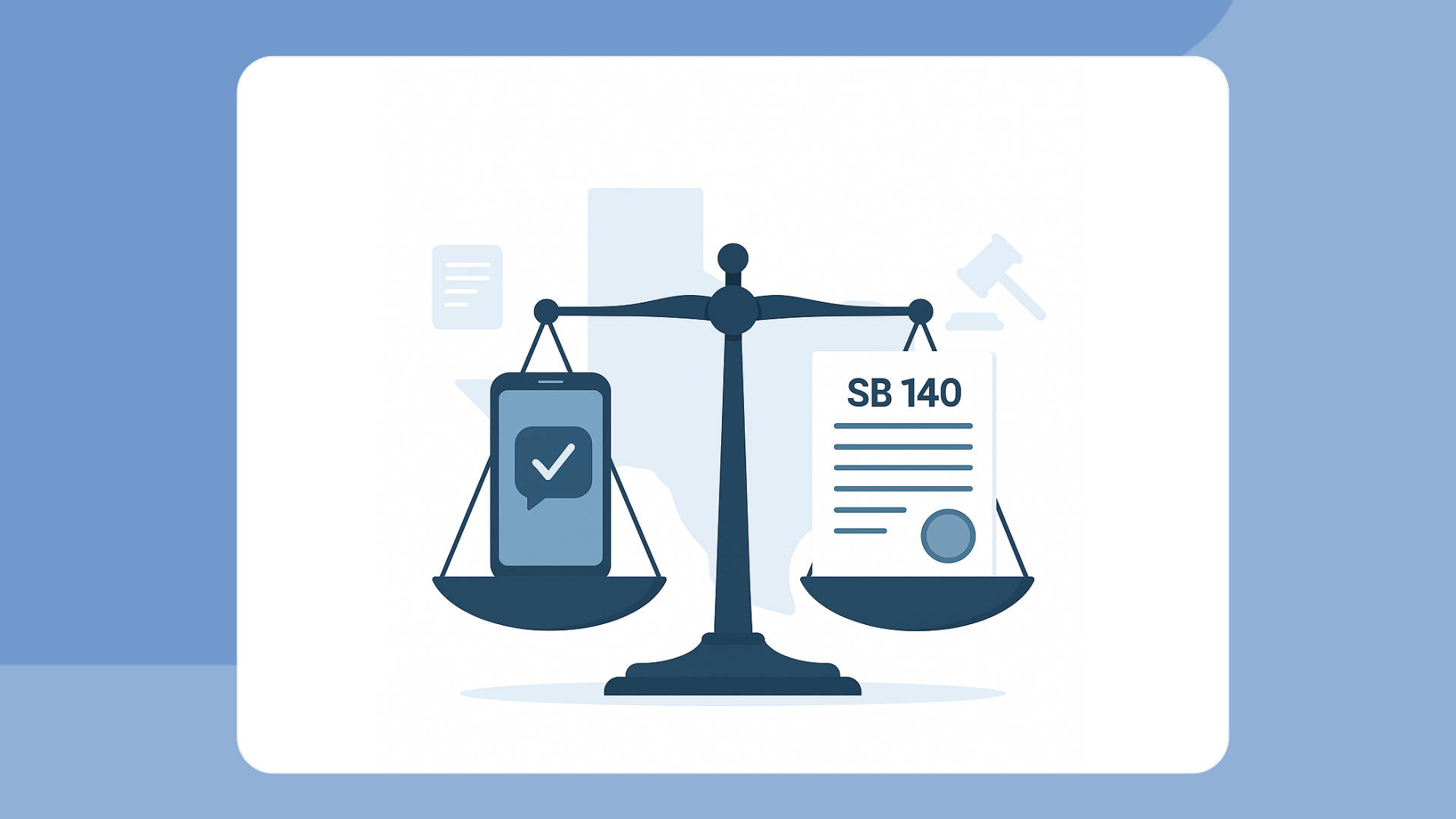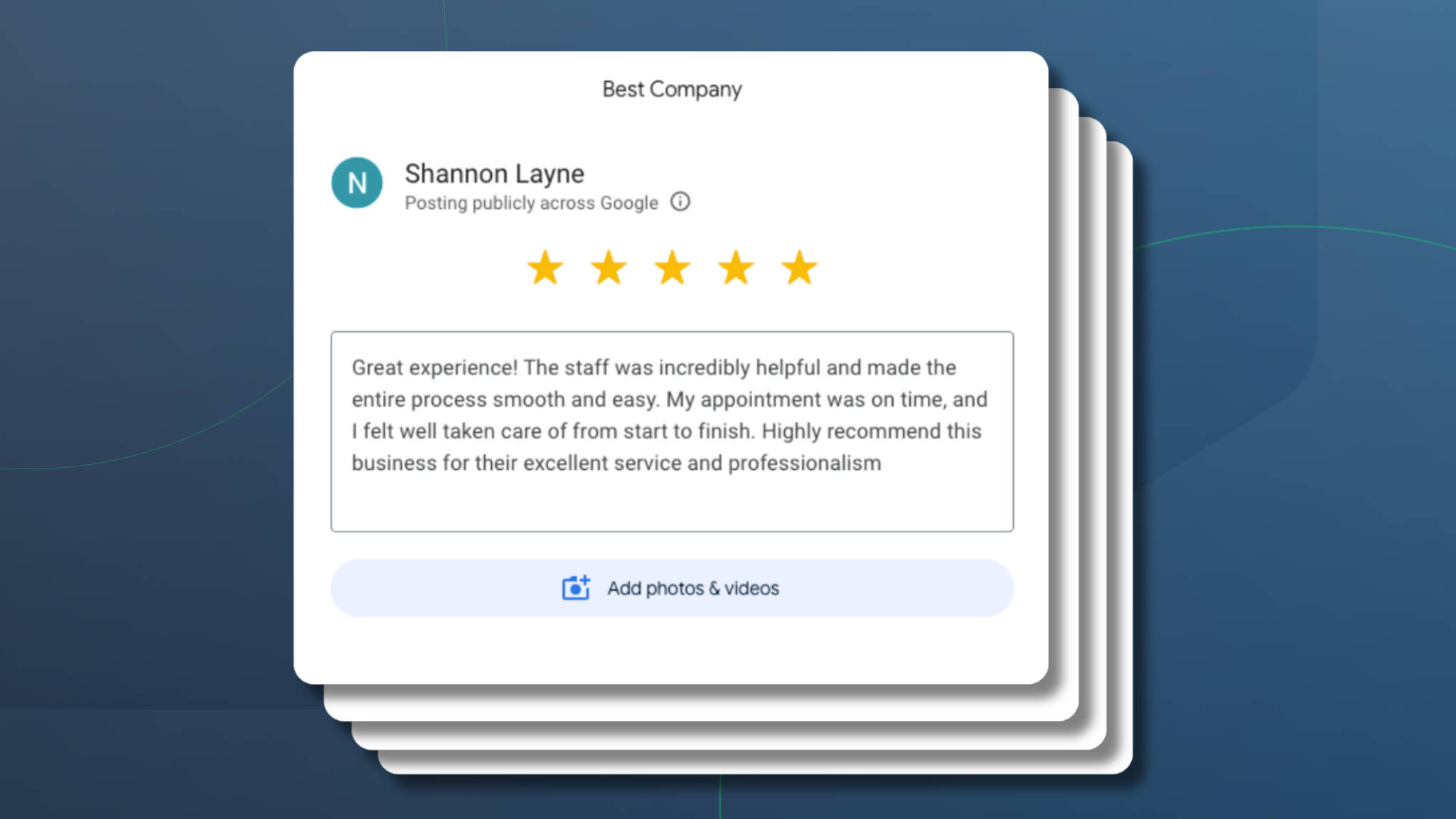Estimated reading time: 9 minutes
A great online booking experience probably won’t catch your attention the first time you schedule an appointment with a new business, but a bad experience definitely will. When a business does appointment scheduling well, they make it simple for you to find their booking page or business phone number. You can easily schedule the services and provider you want, find the perfect time to fit your schedule, and you may even get a message confirming your upcoming visit.
But a bad booking experience is immediately noticeable and incredibly frustrating. Businesses that don’t prioritize scheduling may hide their booking page on their website (or, worse yet, not offer online booking), forget to keep staff availability up-to-date, double-book appointments, or fail to remind clients about upcoming visits. These businesses are losing out on potential customers before anyone enters their doors.
Ensuring your business makes appointment scheduling as seamless and straightforward as possible for your clients and prospective customers is easier than you might think. We’ve compiled ten online scheduling best practices to help you attract and retain clients with a top-notch booking experience. Read on to learn how to turn scheduling from a chore into a charm.
Top 10 Online Scheduling Best Practices
1. Stop Manually Managing Appointments
Switching to appointment management software may feel overwhelming if you’ve always managed appointments manually. But if you’re fearful of learning a new system or transferring over existing appointments and contacts, don’t be! (Hint: Appointment management software solutions like Apptoto offer automatic calendar and address book syncing and exceptional customer support and training resources.) Rest assured that automating your online scheduling and appointment reminders will save you countless hours and headaches in the long run.
Adopting an online scheduling tool streamlines the booking process for you and your client, eliminating the need for phone tag and endless text or email exchanges to find the perfect date and time. Clients independently choose the best appointment times and services for them. All you need to do is ensure your availability is correct and let your system do the rest. You can reinvest all that saved time into booking more appointments, serving more clients, and strategizing new ways to optimize your business.
2. Customize your Booking Page Branding
You’ve carefully crafted your business’s brand to help you stand out. Shouldn’t your booking pages do the same? When it comes to booking page customization, your scheduling software should enable you to add your logo and utilize your brand colors on-page at a minimum. But you should also look for other ways to reflect your company’s unique identity on your pages. That could include customizing your on-page messaging and appointment descriptions to reflect your personality or showcasing your business’s commitment to stellar customer service.

3. Regularly Review Your Availability
Your availability settings determine when clients can book appointments with you and your team members, so it’s important to check that it’s still accurate regularly. After all, you don’t want your clients trying to book appointments with you at 3 A.M. or in the middle of your week-long vacation.
When setting your availability, consider the following:
- What days and times will staff take appointments?
- How far out can clients book appointments? (i.e., 60 days in the future)
- What appointment lengths can clients book?
- Can staff block out lunch or non-client appointments easily?
- Can multiple appointments be assigned to different staff members at the same time?
- Can you customize holidays or days off to prevent clients from scheduling then?
Consider signing up for a free trial of the online appointment booking solution you’re interested in. That way, you can ensure your chosen solution is flexible enough to handle your team’s specific availability needs.
4. Give Yourself Time Between Appointments

It may be tempting to schedule back-to-back appointments all day to help as many clients as possible. But you and your staff need buffer time between client visits. Time padding between appointments can help you ensure late-running appointments don’t cross into the next client’s time, give you time to prepare for the next appointment, or simply let you grab a snack. When you utilize an online appointment scheduling tool, you can set time padding between appointments to 10 minutes (for example). Your online booking pages will automatically update available appointment times to prevent clients from scheduling within 10 minutes of one another, giving you time for a well-deserved break!
5. Don’t Overbook or Double-Book
Without a reliable system in place to track the constant flux of new, rescheduled, and canceled appointments, you run the risk of overbooking or double-booking your staff. Not only does this stress out your staff, but it can also lead to angry customers. Appointment scheduling software eliminates that. Once your team integrates their calendars with your booking system, the tool should be able to automatically reflect team members’ unique availabilities on your booking pages and prevent clients from scheduling when availability doesn’t exist. Similarly, the system should recognize when new appointments have been added, existing appointments have been shifted, or appointments are canceled so that appointments aren’t booked over one another. Most appointment scheduling solutions also enable you to limit how many appointments can be booked at the same time or per day to help further reduce overbooking and double-booking.
6. Make Finding Your Online Booking Page Easy
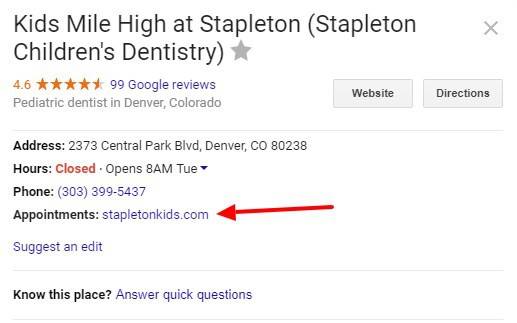
Your business’s financial health depends on a full appointment schedule, so don’t make it tough for clients by burying your booking pages. Making your online scheduling tool easily accessible on (and off) your website will help you grow appointment bookings. A distinct, eye-catching call-to-action (CTA) button strategically placed across your website will help you call attention to your online booking page. If you have a blog, consider embedding links to your scheduling pages there to encourage more appointment bookings. Finally, explore where else you can add your online scheduling page links, like your Google My Business profile, LinkedIn page, and other social profiles.
7. Customize Intake Forms
Intake forms are a valuable resource for your business, and it’s crucial to think carefully about the information you need to collect. Your booking form helps you capture key details about your potential client and their requested appointment to help you best prepare for their visit. However, balance is key. Your form should be comprehensive enough to capture necessary information but concise enough to keep the client engaged. Otherwise, you risk losing your prospect’s interest and business if your form is too lengthy or intrusive.
8. Client Communication is Critical
Your clients lead busy lives. Occasionally, they might forget an important appointment or two. But if you’re regularly sending them appointment messages, chances are, they won’t miss yours. Sending appointment messages helps you establish and maintain strong relationships with your clients leading up to and after their appointments.
When a client first books with you, it’s helpful to send them a message confirming the date and time of their appointment to reduce scheduling conflicts or misunderstandings. Leading up to the appointment, sending periodic messages via text, email, or phone call can be helpful to remind them about their upcoming visit or provide helpful instructions and information. Messages can also be used to quickly communicate schedule changes or send out appointment messaging campaigns to recall past clients and remind them it’s once again time to book (in turn, helping increase new appointment bookings).
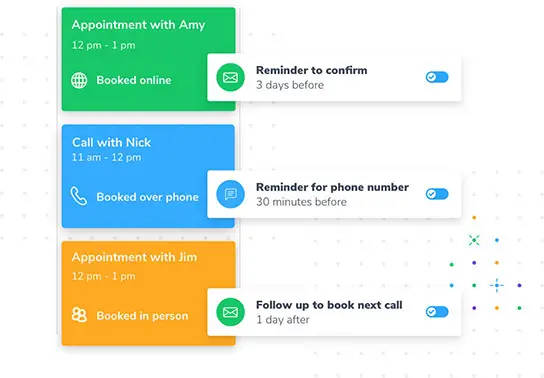
You get the best of both worlds by utilizing an appointment management system like Apptoto that combines online scheduling and automated appointment reminders. After a client books, their new appointment is synced to your calendar. They are automatically enrolled into a custom messaging sequence based on information like their appointment type, provider, or location. You can send booking confirmations, reminders, and follow-up messages at various intervals, with personalized details pulled directly from their contact and booking form details. Appointment messages can also be set up to allow the client to confirm their upcoming appointment, cancel, or reschedule—in which case they’re redirected back to your booking page!
9. Collect Payments during Booking
Simplifying the payment process for your clients is a win-win for all. Integrations between appointment management tools and payment processors now enable businesses to collect payment information, partial payments (deposits, copays), full payments, or no-show fees at the time of booking. Businesses save time and administrative burden since one system handles scheduling and payments, and customers appreciate the convenience of having their payment information on file and easily chargeable at the end of their appointment. Likewise, when customers pay for part of their appointment in advance, they are more committed to attending since there may be a penalty for missing their appointment.
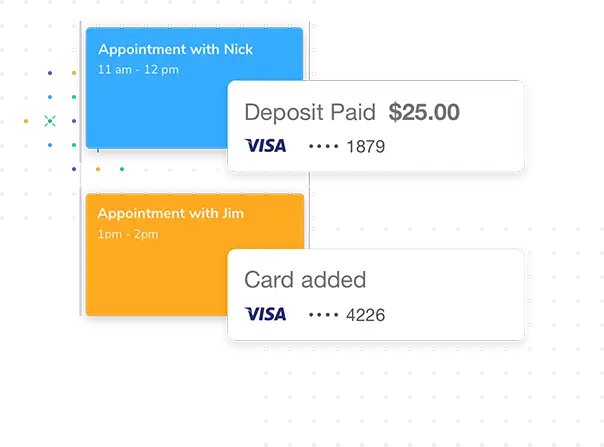
10. Establish a Cancellation Policy
When running a business, last-minute cancellations and no-shows are inevitable and infuriating. You lose out on the revenue from the canceled appointment, and there is little to no opportunity to fill the slot with another customer. A cancellation policy can help you set clear expectations and consequences with your clients and mitigate some of the financial strain of missed appointments. An effective appointment cancellation policy communicates:
- Cancellation timeframes (i.e., notice must be received >24 hours before an appointment)
- How clients should communicate cancellations (email, text, phone call, cancellation link)
- Penalties or fees associated with cancellations (and any exceptions)
- Policies for repeat cancellations
Finding the right cancellation policy for your business will depend on you and your clients’ needs. Regardless of your policy, regularly communicating your policy to clients is essential. You can include your cancellation policy on your website and online booking pages or require clients to sign a form before the start of their first visit.
Maximize Client Engagement with These Online Scheduling Best Practices
At the end of the day, making your business’s online scheduling more accessible and reliable is a big win for everyone. No one likes the hassle of a clunky or broken booking page or forgotten appointments. These simple tips and a great online scheduling tool will make life easier for you and your clients. It’s like giving your business a friendly front door that’s always open, welcoming, and easy to use.
So, find an appointment management system that best aligns with your business’s needs, and try out these ten online scheduling best practices. Your clients will appreciate a smooth booking experience and value your commitment to customer service. And chances are, you’ll likely find yourself with more time and much less stress.


